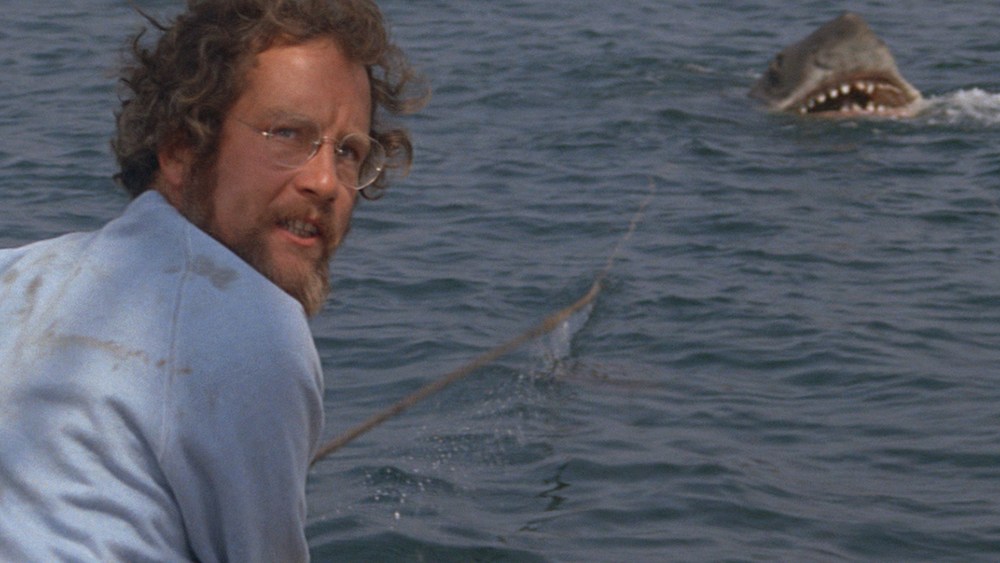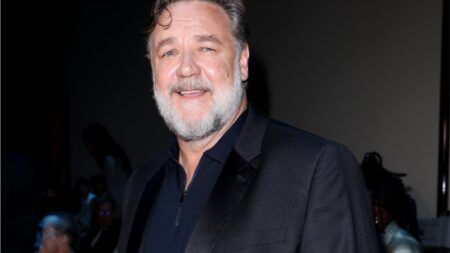It’s a cornerstone of movie mythology that “Jaws” and “Star Wars” are forever linked, like high-concept popcorn twins. They’re the movies that, taken together, ushered in the blockbuster revolution. As the myth goes, “Jaws” and “Star Wars” launched the permanent takeover of movies by — for lack of a better word — escapism. (Looking at the Hollywood product of the last half century, I can think of far nastier words for it.) But today, on the 50th anniversary of the day that “Jaws” was released, I’d like to take the opportunity to de-link those two movies.
In 1977, “Star Wars” was a sci-fi fantasy so potent and square and video-game zappy, one that would prove to be so addictive to so many generations, that it effectively marked the birth of our all-fantasy-all-the-time popular culture. Its influence was beyond profound. It changed the consciousness of people. It made them want to live in other worlds. Obviously, it wasn’t the first movie or work of art to do that. (In modern times, you can trace the world-building narcotic quality of “Star Wars” back to “The Lord of the Rings,” with an assist from “Dune.”) To me, though, the bottom line is that it’s “Star Wars” that gave birth to the movie culture we have today.
But what of “Jaws”? When it opened on June 20, 1975, there’s no doubt that it felt like the formative summer movie and the ultimate popcorn movie. Yet it’s worth noting that a great deal of what was revolutionary about “Jaws” had to do with the unprecedented way that it was distributed and marketed. It opened on 464 screens, all but unheard of at the time, and the release was propelled by a marketing blitz that included an unprecedented $700,000 spent on two dozen national television advertising spots. This new level of commercial saturation helped turn “Jaws” into an instant juggernaut, allowing it to dethrone “The Godfather” as the top-grossing movie of all time in just 78 days. That’s a lot of why “Jaws” is thought of as the original summer blockbuster.
Really, though, blockbusters weren’t new. What was new was the term blockbuster (at least, as applied to movies), as well as what the term represented — a new mentality in Hollywood that would tilt the profit-vs.-quality equation toward a more openly rapacious balance. And because all of this is so wired into the mythology of “Jaws,” it’s easy to think of “Jaws” as a movie — or maybe as the movie — that incarnated Hollywood’s mid-’70s hairpin turn toward escapism.
Then again, it’s worth asking how true that actually is in a ’70s movie culture that had already given us such boffo bonanzas as “The Towering Inferno” and “Billy Jack” and “The Sting” and “The Exorcist” and “The Getaway” and “Shaft” and “The Last House on the Left” and “The Longest Yard” and “Herbie Rides Again” and “Willard” and “Summer of ’42” and “The Life and Times of Grizzly Adams” and “Freebie and the Bean” and “Willy Wonka and the Chocolate Factory.” I’d argue that “Jaws” is no more “high concept,” no more decadently “escapist,” than any of those films. I’d also argue that it’s a greater work of movie art than any of them.
There’s no denying that the outrageous success of “Jaws” made it the first high-profile step toward a fundamental change in movie culture. (“Star Wars” was a much bigger step.) But when I watched “Jaws” again the other day, marveling in every scene at the genius of the young Steven Spielberg, what struck me about the movie isn’t how “escapist” it is. It’s that every moment of “Jaws” works as enthrallingly as it does because the entire movie feels so real. Spielberg staged it with a verisimilitude that emerged directly out of the New Hollywood ethos of the ’70s.
“Jaws” wasn’t some sharply angled turn away from the artistically staggering films of the first half of that decade; it was all of a piece with them. The opening sunset beach party now plays like a free-flowing anticipation of “Dazed and Confused,” and in the morning-after scene, set in the home of Martin Brody (Roy Scheider), the new police chief of Amity, you can feel how much “Jaws” was directed by a filmmaker who wasn’t rich yet; he still knew what it felt like to wake up in an ordinary house. In the kitchen, Brody takes a police call as his wife (Lorraine Gary) deals with his son’s cut hand in the background, and the scene is pure Robert Altman: two simultaneous overlapping realities. Watching “Jaws” again, it hit me with full force how influenced by Altman the film was. It’s there in the sound design, in the multiple interactions taking place at the same time. You feel it on the beach, where the people we see never come off as extras in swimsuits — they’re all true characters intersecting at random.
Yet that documentary-like sense of life that was Altman’s trademark, and that Spielberg drew on in “Jaws,” putting his own kinesthetic stamp on it, isn’t just a matter of background-dialogue recording technique, or of how the action was framed. It’s really about empathy. Spielberg saw everyone on screen as an individual, and in doing so he turned scenes into dramatic juggling acts. He even does that, in a very Spielberg way, in our first full-on view of the shark, that famous off-the-beat moment when Brody is tossing chum and talking to someone behind him and the beast suddenly looms. Spielberg has so much empathy that even his monster fish occupies its own reality.
“Jaws” was a lavishly authentic B horror film; a ’70s greedhead conspiracy thriller; a “Moby Dick”-for-the-age-of-land-lovers adventure saga; a drama of three men — old macho (Robert Shaw), new macho (Roy Scheider), and post-macho (Richard Dreyfuss) — competing on a boat; the ultimate scary funhouse prank on the audience; and one of the most perfectly executed movies ever made. Through it all, the film’s reality-based quality is there in a thousand ways, big and small. It’s there in Lee Fierro’s brilliant one-scene performance as the mother of the boy who gets eaten by the shark. It’s there in the unnerving ocean images shot at water level. It’s even there in the shark itself: After all the stories of how difficult it was to get the three animatronic sharks to work, and how fake they could look (which is why the editor Verna Fields had to disguise it all with quicker cuts), when I saw “Jaws” the other day I found the shark — its eyes, movement, skin texture, and jaws — to be astonishingly genuine, blowing away the kind of digital effects we now routinely accept as eye-popping.
“Jaws” didn’t so much end the New Hollywood as cap it off, demonstrating that the impulses of Hitchcock and Altman could be fused. In the film’s second half, which is set entirely aboard Quint’s fishing boat, the movie takes a turn into pure “action,” yet nothing that happens during the extended man-.vs.-nature battle is hyped or implausible, staged in some over-obvious screw-tightening way. It’s all spontaneous and organic, from the firing of the harpoons attached to yellow barrels to how the infrastructure of the boat slowly starts to come apart to the undersea cage face-off to the way that Quint slides, inexorably, into the shark’s mouth, as if karma had decided he belonged there.
Half a century after it was made, the message of “Jaws” — the lesson of it, to moviemakers and audiences today – is that a great piece of “escapism” isn’t about escaping reality. It’s about using reality to create a catharsis that allows us, for a few moments, to escape ourselves. “Jaws” may have been Hollywood’s first official summer blockbuster, but the truth is that it was the yin to the yang of “Star Wars”: the opposite of fantasy, a movie that honored the deepest premise of movies — to hold up a mirror to the world and have us look upon it with awe.
Read the full article here








